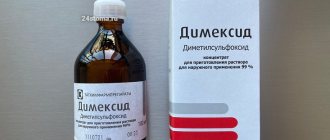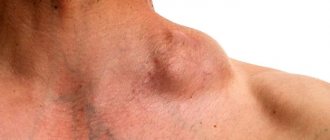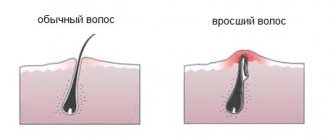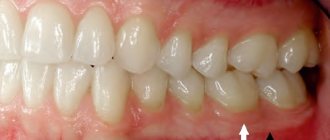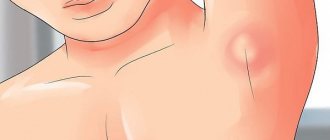Types of lymph nodes
Small lymph nodes are located throughout the body. Located nearby, they form groups and chains. The main groups of lymph glands are found in the neck, armpits and groin area, as well as in many other places in the body. Lymph nodes are connected to each other by lymph channels. Lymphatic fluid is formed between the cells of the body. This watery fluid travels along channels through the glands and eventually enters the bloodstream. Lymph nodes are a major part of the immune system. They contain former blood cells (lymphocytes) and antibodies that protect the body from infections.
Treatment of lymphadenitis
The main thing that the patient should know and take into account is the inadmissibility of self-treatment. Under no circumstances should you try to stop the disease yourself. Only a doctor prescribes the necessary treatment tactics, and it consists of conducting the correct etiotropic and pathogenetic therapy. As a rule, all efforts of the doctor and the patient are directed toward eliminating the source of inflammation that provoked the development of axillary lymphadenitis. Most often, the doctor prescribes anti-inflammatory drugs and prescribes antibacterial therapy. It is also advisable to use compresses with Dimexide, physiotherapeutic treatment, and immunomodulators. All this helps the body to get stronger and cope with the disease that has arisen. If a malignant process arises and develops and is accompanied by axillary lymphadenitis, then the patient must undergo a course of chemotherapy or surgery will be indicated.
Main reasons
Infection
As the immune system fights bacteria and viruses, the lymph nodes swell and become soft. They return to normal size only when the immune system has completely defeated the infection. May last about a week. Common infections include the following:
- Throat, colds and tooth infections
- Skin diseases on the head, including lice, can cause swelling in the occipital region
- Skin diseases of the hands can lead to inflammation in the axillary area
- Infections in the legs and genital area usually lead to enlarged lymph nodes in the groin area
- Viral infections such as influenza, chickenpox, and mononucleosis affect the entire body.
Cancer, lymphoma, leukemia
Less common cause. Cancer cells can metastasize to nearby lymph nodes through the lymphatic channel. These cancer cells can live and spread in the lymph glands and cause swelling. Types of cancer that cause inflammation:
- Mammary cancer
- Throat cancer
- Lung and stomach cancer
- Skin cancer
- Cancer of the lymphatic and circulatory system
- As a rule, enlarged lymph nodes for this reason cause less discomfort and may be painless at an early stage.
Other, less common causes
Rarely, swelling is associated with a reaction to certain medications and with diseases such as sarcoidosis and some forms of arthritis. The problem can also be caused by Kawasaki disease, HIV and tuberculosis.
Causes of inflammation of the lymph nodes
The most common cause of lymphadenitis is staphylococcal, streptococcal infection, as well as E. coli. If the body is weakened by a large number of pathogenic bacteria, then the lymphatic system simply cannot cope with them. Therefore, there is an accumulation of microorganisms in the lymph nodes, as a result of which they give an inflammatory reaction. Factors contributing to inflammation of the lymph nodes can be considered pathologies of the mammary glands, colds and respiratory diseases, cancer, furunculosis, excessive work of the sweat glands, allergies, intoxications and infections.
It happens that only one node becomes inflamed, and sometimes the inflammation affects several lymph nodes throughout the body. The enlargement of the nodes can be quite strong, as a result of which they become sensitive and painful. The nodes located in the armpit begin to ache, swell, and turn red. Inflammation may be accompanied by general weakness, drowsiness, headache, nausea, and vomiting.
What to do if the lymph nodes are enlarged
Enlargement due to infection is common and does not require special attention. For example, with frequent throat diseases, the lymph nodes swell in the neck. You should be concerned if the nodes have increased without any obvious reason. In this case, you should consult a doctor. You may also need to see a doctor if the swelling does not go away within two weeks.
See also: Inflammation of the lymph nodes in the neck - treatment
We invite you to familiarize yourself with the ESMA line of medical devices.
Symptoms of axillary lymphadenitis
Inflammation in the regional axillary lymph nodes is isolated, accompanied by catarrhal symptoms and suppuration. Next, the most common clinical pictures of axillary lymphadenitis will be presented.
- Acute catarrhal form. It occurs more often than other forms and usually has a mild course. Lymph nodes in this form of the disease are enlarged, painful, compacted, they are easily separated and do not cease to be mobile. The tissues in the armpit are hyperemic and there is slight swelling. The patient may feel a deterioration in general condition, slight low-grade fever and discomfort when moving the shoulder.
- Purulent form. Such inflammation is extremely dangerous, as it is accompanied by the formation of a purulent focus consisting of single or multiple abscesses. The node itself ceases to be mobile, pain and swelling appear. The tissues located next to the source of inflammation are hyperemic, and alternative processes or melting may begin. Soldering of inflamed nodes with the skin may also occur.
- Chronic form of lymphadenitis. This is a common, indolent form of the disease, which is accompanied by inflammation of the axillary lymph node. Occurs when the body is weakened, immunity decreases, and resistance to infections decreases. Symptoms of chronic axillary lymphadenitis do not have a pronounced picture: the nodes retain their mobility, but the patient feels slight pain.
Cervical lymphadenitis - symptoms and treatment
Elimination of the primary source of infection
Cervical lymphadenitis is often caused by acute or aggravated periodontitis and complications of advanced caries, such as acute purulent periostitis.
If the tooth can be saved, the root canals are cleaned and filled. If it is impossible to restore a tooth, it is removed. When a purulent focus has formed, the diseased tooth is treated or removed, and the abscess is opened. If cervical lymphadenitis has developed due to a disease of the ENT organs, the source of acute inflammation should also be eliminated.
Drug therapy
- Antibacterial therapy. Broad-spectrum antibiotics are usually used, mainly with a bactericidal effect. The components of such drugs destroy the cell wall of the bacterium or disrupt its metabolic processes, which leads to the death of the microbe. If the patient's condition does not improve, biological material obtained from the lymph node is examined and the sensitivity of microorganisms to drugs is determined.
- Antiviral drugs are used for viral origin of lymphadenitis, for example, herpes.
- Anti-inflammatory drugs suppress inflammation at the cellular level, reduce pain and reduce fever.
- Antihistamines reduce capillary permeability, which prevents the development of edema and congestive processes. They also prevent leukocytes from penetrating into the lesion and inhibit the production of substances that contribute to the development of inflammation.
Physiotherapeutic treatment
- UHF (ultra-high frequency therapy) is aimed at reducing swelling, inflammation and pain.
- Ultrasound is used to speed up the resolution of the inflammatory process.
- UVR (ultraviolet irradiation) is indicated to reduce inflammation.
- Laser therapy is aimed at reducing pain, improving nutrition and blood supply to the affected area.
- Electrophoresis is a method in which a medicinal substance penetrates tissue using a direct electric current. For lymphadenitis, electrophoresis with potassium iodide and proteolytic enzymes is usually performed.
- Magnetic therapy is aimed at reducing pain, inflammation, swelling and congestion in tissues.
Physiotherapeutic methods are used in Russia to reduce the duration of drug treatment, but there is insufficient scientific evidence of their effectiveness.
Surgical intervention
Opening a purulent focus is indicated for purulent forms of lymphadenitis and adenophlegmon. Depending on the size of the lesion, the operation is performed under local or general anesthesia. During surgery, the purulent contents and tissue of the disintegrated lymph node are removed.
After surgical treatment, a drainage is placed in the wound, which ensures the drainage of pus and prevents the edges of the wound from healing. Then the wound is treated, its edges are renewed and sutured.
Detoxification therapy
Reduces the level of toxins in the body by diluting them, absorbing breakdown products and increasing diuresis. To do this, drink more fluid, and in severe cases, Hemodez and Reogluman are administered intravenously.
Diet
It is recommended to eat a balanced diet and consume enough vitamins, macro- and microelements.
Features of treatment of lymphadenitis
Treatment of cervical lymphadenitis directly depends on the stage and form of the disease.
In acute serous lymphadenitis, special attention is paid to the primary source of inflammation: inflammatory diseases of the teeth, oral cavity and ENT organs. If the primary inflammatory process is stopped in the early stages, then the symptoms of acute serous lymphadenitis also become less pronounced.
In almost 98% of cases with acute lymphadenitis, it is possible to identify the primary lesion [10]. It is eliminated and antibacterial, antiviral, anti-inflammatory or antihistamine therapy is prescribed.
When a purulent form develops, the primary focus is eliminated, the abscess is opened and the tissue of the disintegrated lymph node is removed. The patient is usually kept in the hospital under 24-hour observation. Daily dressings are performed, antibacterial, anti-inflammatory, antihistamine and detoxification therapy is prescribed.
In case of chronic hyperplastic lymphadenitis, the affected lymph node is removed, and treatment is also carried out in the hospital. Tissue fragments are sent to the laboratory, processed and examined under a microscope. This procedure allows you to exclude cancer and prevent its development.
WHAT DOES LYMPHADENITIS THREATEN?
22.Mar.2021
The infection can enter the lymph node from a wound, boil (boil), panaritium, diseased tooth and other sources. The inflammatory process is accompanied by pain and enlargement of the lymph node, headache, weakness, general malaise, and increased body temperature.
In the case when suppuration of the lymph nodes themselves occurs, the symptoms become more pronounced: intense pain appears, the skin over the lymph nodes becomes red, the previously clearly defined nodes merge with each other and the surrounding tissues, and become immobile.
Of practical importance are primarily superficial and deep lymphadenitis of the face and neck. In the facial area, there are buccal, parotid and mandibular lymph nodes.
In the tissue on the outer surface of the body of the lower jaw and in front of the place of attachment of the masticatory muscle, the so-called supramillary or mandibular lymph nodes are located. The deep nodes are located between the lobules of the parotid gland, corresponding to the level of the earlobe.
Acute inflammation begins with a feeling of some awkwardness when moving the head, dull pain in the area of the affected node or group of nodes. Enlarged lymph nodes are clearly visible on palpation, but they are somewhat painful and have a dense elastic consistency. General disturbances at the beginning of inflammation may be absent or mild.
If the course is unfavorable, the inflammation can turn purulent: the node becomes inactive, “fused” with others, forming a group. Body temperature rises to 37.2-37.8 °C. Changes characteristic of ulcers appear in the blood. The patient becomes unwell, weak, loses appetite, etc. In turn, the inflamed lymph node gradually melts and leads to the formation of a fistula tract (with the disease becoming chronic).
Chronic specific lymphadenitis, as a rule, affects the mandibular, submandibular, premaxillary and cervical nodes. Sometimes it is combined with damage to the lymph nodes in other parts of the body, including bronchial and retroperitoneal. The course of chronic lymphadenitis is very diverse, which depends on the stage of the disease, the number of affected lymph nodes, the reaction of the tissues surrounding the node, etc. The diagnosis of inflammation of the lymph nodes is established only during a medical examination. Self-treatment is also contraindicated.
Elena Averkina
, oncologist, Nyagan City Clinic
